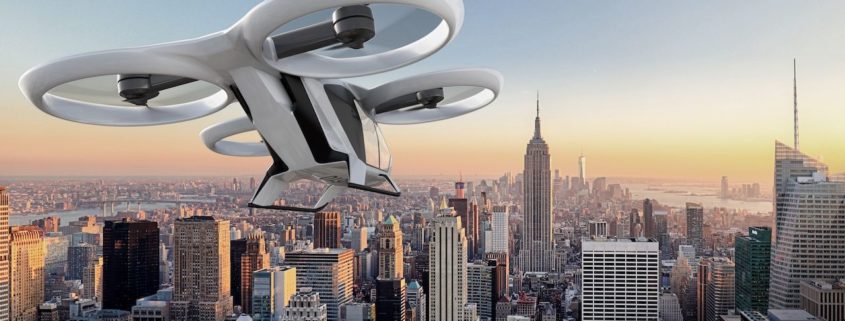Mobility in 2050? Drones, visions and more…
While CNN asks why Boeing is not grounding the 737 MAX, drone companies are competing on their future visions around taxi services. And the outlook of their visions goes until 2050…
There is much hope and many questions around air mobility of the future. Whether drones will be all around us in 2050? Well, for sure logistic and service drones will change the world massively, but won’t taxi drones will have many challenges to succeed?
Many people in the innovation space around me wonder, if passenger drones become a transportation vehicle for the normal crowd, or if they will still remain a service for the well-off people who can afford it. Still, the race for urban air mobility is on.
Airbus has just recently presented their first VTOL. Volocopter announced a collaboration with Frankfurt airport to provide electric air traffic service. And Ehang has already been announced as China’s first pilot company to develop passenger drone programs. There is even rumors about Porsche getting in the game. And maybe, passenger drones are only one flying taxi service of the future, when Lilium Jet enters the market.
No wonder that many players are entering market for urban air mobility – it looks financially very attractive.
According to a global forecast by Research and Markets it was estimated to be USD 5.3 billion in 2018 and meant to come in at over USD 15 billion by 2030.
While some challenges for futuristic air transportation seems to be obvious, finding appropriate price modeling, availability of electric power, capability of batteries and reach, the fast loading time of batteries, and so on. The above mentioned collaboration between Volocopter and Frankfurt airport shows also the big need for infrastructure, air regulation, platform solutions, and the provider’s business model will make the difference how likely taxi drone services will be available and affordable for everyone. And maybe UBER Elevate already has the ultimate monetization model based on their car taxi business.
But one development in urban air traffic will become interesting from my perspective in the future: the trust of the passengers in the new flying objects. How will the public accept the urban air traffic service (Airbus has some answers)? What will happen to them, when a passenger drone falls from the sky one day? Will they stay on the ground for much longer than a crashed air plane series, because they are a new technology – or shorter, as only one to three people will be affected?
And how will people accept the noise above their heads in “smart cities” in the future. Will there be a ban for night flights as well? To inspire you a bit more, the Aerospace Industry Association has created some interesting futuristic vision of how transportation might look like in 2050. Watch it and have a think about it.
Vision 2050: The Way to What's Next from Aerospace Industries Association on Vimeo.
And afterwards, maybe you want to read some challenging background view of a futuristic world by reading and discussing my perspective on the “Brave Smart World” ahead of us.
Whether all this will happen in 2050 or sooner, we will see…




